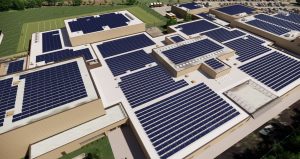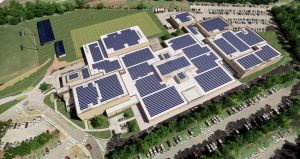Roof Mounted Solar Design
Are you looking to put solar panels on your roof; install panels on someone else’s roof; or looking to develop a solar panel system?  If your answer is “yes” to any of those, chances are that you won’t just need a Renewable Energy Engineer, but also a Structural Engineer with plenty of experience in the solar industry.
If your answer is “yes” to any of those, chances are that you won’t just need a Renewable Energy Engineer, but also a Structural Engineer with plenty of experience in the solar industry.
Not only does your engineer need to know what windspeeds to design and assess for, but also, they must know how the wind behaves with the structure and the solar panels. Even for the same exact windspeed, a solar panel in the middle of a land based solar farm is going to experience a different load to a solar panel mounted onto a roof in Michigan. Think of an aeroplane’s wings:  The pilot is able to change the amount of uplift acting on the wings by making a few adjustments to the control surfaces, which changes the way that the air flows over the wings. In the same way that the wind forces on an aeroplane can be increased by angling the flaps on a wing, so too can the forces on a roof be increased by tilting solar panels. Sometimes, a roof might only just have enough strength to resist the wind (sometimes it doesn’t have enough strength), so any amount of tilting (or even any solar panels at all) might not be able to be accommodated, at least without strengthening works being carried out first.
The pilot is able to change the amount of uplift acting on the wings by making a few adjustments to the control surfaces, which changes the way that the air flows over the wings. In the same way that the wind forces on an aeroplane can be increased by angling the flaps on a wing, so too can the forces on a roof be increased by tilting solar panels. Sometimes, a roof might only just have enough strength to resist the wind (sometimes it doesn’t have enough strength), so any amount of tilting (or even any solar panels at all) might not be able to be accommodated, at least without strengthening works being carried out first.
So, in order to achieve the most efficient design or to ensure that detrimental factors aren’t overlooked, your engineer needs to  have a sound understanding of the American Standard wind loads, how to use them, and how to correctly assess and calculate all of the many different variables and parameters. DDSE has the experience and certifications and we’re always happy to help. If you’re about to embark on a solar installation project, be sure to give us a call.
have a sound understanding of the American Standard wind loads, how to use them, and how to correctly assess and calculate all of the many different variables and parameters. DDSE has the experience and certifications and we’re always happy to help. If you’re about to embark on a solar installation project, be sure to give us a call.